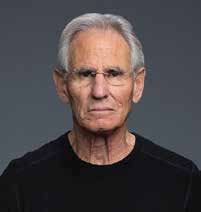Home >
Being Mindful during COVID
Today’s world has become one of uncertainty
The youth are especially affected by the high levels of uncertainty during these times. The dilemma concerning their future, being locked up at home with limited or no interaction with the outside world and socialization at its minimum, the youth of today are facing a mental crisis. New routines with online classes and assignments, the need to be safe and no support, there is a feeling of being in jail. Intense levels of claustrophobia, feelings of hopelessness, and desperation creep in, One of the ways we could overcome these challenges is by practicing mindfulness.
Origin of Mindfulness

Jon Kabat-Zinn
Rooted in Buddhism
Mindfulness is rooted in the Buddhist meditative practice of Vipassana. The term mindfulness is the English translation of the Pali word Sati. The principles of mindfulness are thus rooted in Buddhist philosophy and teachings. In particular, it is based on the Buddhist philosophy that observation of thoughts, sensations, and emotions as something impermanent, rather than something unchangeable, is the key to relief from su ering.
Mindfulness is not a religion nor is it associated with any. It is merely a technique used to function better and lead a holistic life.
Western culture
The emergence of mindfulness in Western culture can be attributed to Jon Kabat-Zinn. Kabat-Zinn studied mindfulness under several Buddhist teachers, such as Philip Kapleau and Thich Nhat Hanh. As a professor at the University of Massachusetts medical school in the late 1970s, Kabat-Zinn developed a program called Mindfulness-Based Stress Reduction (MBSR) to treat chronic pain. He discovered that patients would often try to avoid pain—but that that avoidance would lead to deeper distress. Practicing mindfulness was a more successful approach.
Mindfulness is the basic human ability to be fully present, aware of where we are and what we’re doing, and not overly reactive or overwhelmed by what’s going on around us. Being fully aware of the situation of the pandemic but not letting it take over our existence in a way that we cannot function, is what practicing mindfulness would do.
What is Mindfulness?
Foundation of Mindfulness
 |
The first is to attend to sensations, thoughts, or emotions by being aware. |
 |
The second is having an open, curious, and non-judgmental attitude. |
 |
The third is by not being reactive to inner experiences, and the final is for one to observe and attend to sensations by focusing on their thoughts, sensations, and feelings. |
The foundational practices of mindfulness are mindfulness of the body, where one is aware of the breath, mindfulness of feelings, which may be pleasurable or pleasant as well as painful or unpleasant, mindfulness of the mind, where one understands their mind as being greedy or not, hateful or not, deluded, developed, liberated, and so on, and finally mindfulness of life where the individual detaches the self from things that may or may not be important for survival.
Though mindfulness is a form of meditation there is one key aspect, which di erentiates mindfulness from other forms. Unlike other forms of meditation, Mindfulness does not stress the component of not attending to thoughts that may invade our meditative practice. This form looks at attending to any thoughts that may come our way during practice. Thoughts are seen as clouds that appear and pass on. They are not held onto but are recognized as a thought and let go of non-judgmentally and objectively. One does not feel guilty or discouraged by the fact that they are unable to concentrate through the practice. This form of meditation also does not focus on breath regulation but only focuses on the in and out-breath which may be slow, fast, or medium paced. We are not focusing on change but only focusing on the moment and recognizing it with no bias or yearning.
How can we practice Mindfulness?
 |
The BreathFocus on the breath is also the first step in mindfulness training. This involves a focus on the inhalation and exhalation of breath. After mastering this, practitioners then focus on the art of concentration. Once again, this is focused primarily on the breath. Practitioners train to concentrate on the breath without attempting to alter it. |
 |
The BodyThe next step in mindfulness practice focuses on mindfulness of the body. This is achieved through body scan meditation. Tension is released from the body by focusing on the breath. Finally, the practi - tioner is trained in walking meditation. This form of meditation makes the practitioner aware of their movement within and between spaces. |
Mindfulness techniques focus primarily on the breath, body, and movement.
However, they also focus on reduction in negative thoughts, improved concentration, and reduction in negative emotional states. This is achieved by training practitioners to focus on the present and to observe and let go of negative thoughts, feelings, and physical sensations. Thoughts are loo ked at as just thoughts and do not make an individual. This is also achieved through the use of metaphors and paradoxes. This ma kes the individual more aware of impermanence and in turn regulates thoughts and emotions.







